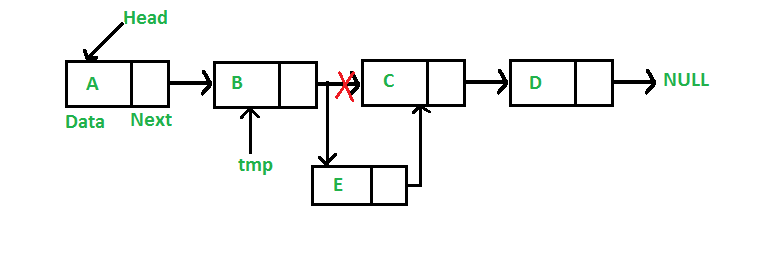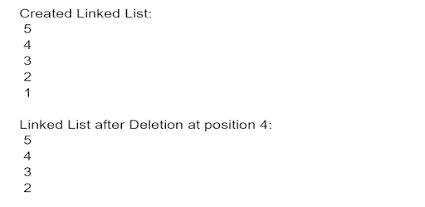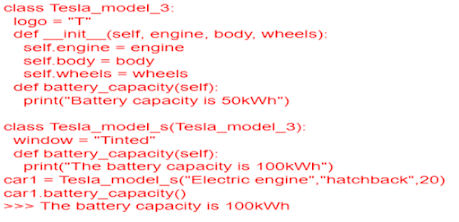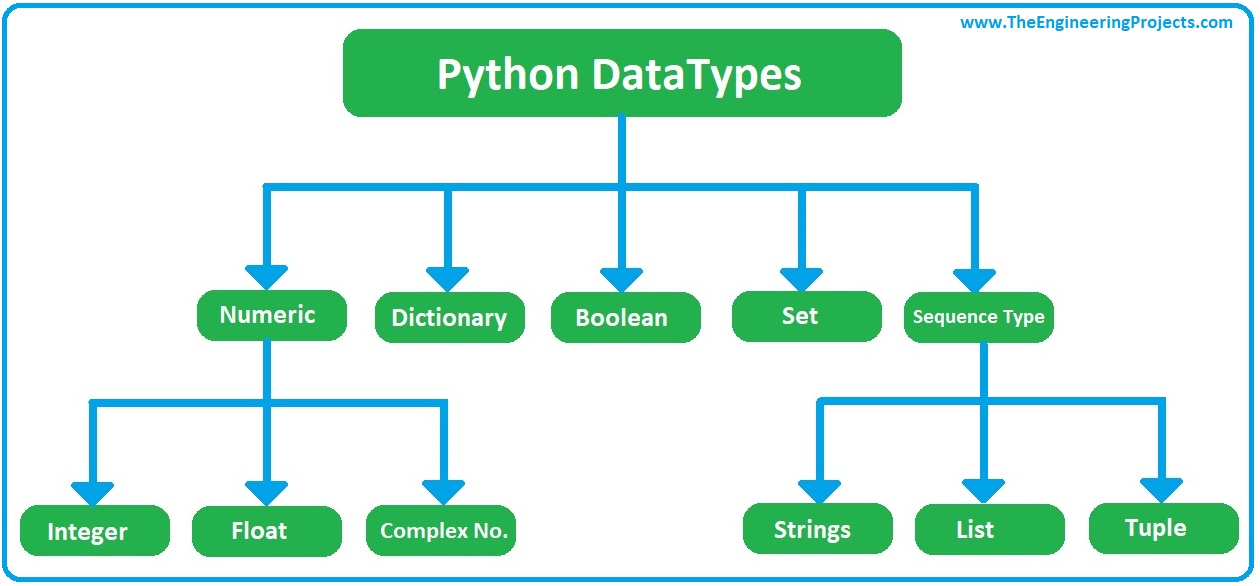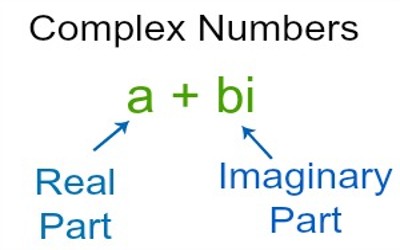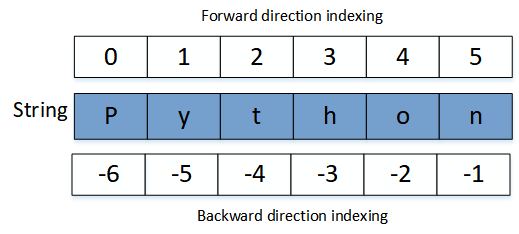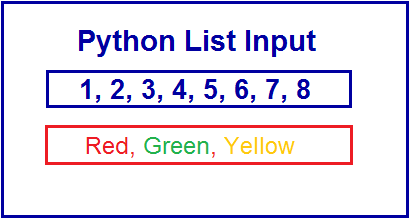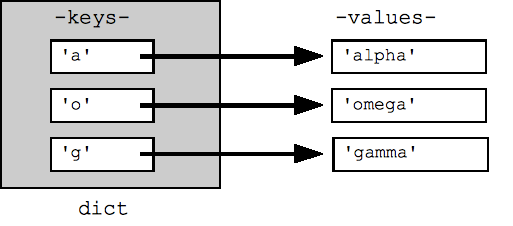Hello, programmers in today's lesson we are going to learn about some advanced data structure. As we have already discussed data structure and variables in our previous lesson I would assume that you know the basics😄. So, in today's lesson, we are going to discuss all the linear data structures and their operations. The linear data structure is a type of data structure in which that data is stored sequentially.
Different types of the linear data structure are:
1.Linked list
2. Stack
3.Queue
What is a linked list?
A linked list is a type of data structure where it consists of n number of elements and each element has a data part and a pointer. The pointer points to the next element whereas the data part stores the data. A pointer is nothing but a reference to the next element in python but this is not true for other programming languages such as C/C++ where a pointer is a variable that stores the address of other variables. We could visualize a linked list something like this:
Here, the linked list consists of 4 elements and each element has data and a next. The data part stores the data and the next is the pointer to the next element. Also, we have another pointer "Head" that points to the first element of the linked list. Now, let us write some code to create our own linked list in python.
#Node class class Node: #Node class function def __init__(self,data): self.data = data #Assign data self.next = None #Assign pointer and initialize it as null #class Linkedlist class LinkedList: #Function to initialize Linked list def __init__(self): self.head = None #pointer head pointing to the first node of linked list
Here, In the Python code above we created a class Node which has a function containing data and a pointer. We initialized the pointer to be null as this is our first node and currently, it is not pointing to the next node. Also, we created another class LinkedList having a function that initializes the head pointer that points to the first node of the linked list. Now let us create some nodes and join them to actually make a linked list.
#Node class class Node: #Node class function def __init__(self,data): self.data = data #Assign data self.next = None #Assign pointer and initialize it as null #class Linkedlist class LinkedList: #Function to initialize Linked list def __init__(self): self.head = None #pointer head pointing to the first node of linked list if __name__ == '__main__': first = LinkedList() first.head = Node(1) second = Node(2) third = Node(3)
We have created three nodes and those are first, second, and third. Here the first node contains the head pointer. Now let us join these three nodes.
#Node class class Node: #Node class function def __init__(self,data): self.data = data #Assign data self.next = None #Assign pointer and initialize it as null #class Linkedlist class LinkedList: #Function to initialize Linked list def __init__(self): self.head = None #pointer head pointing to the first node of linked list if __name__ == '__main__': first = LinkedList() first.head = Node(1) second = Node(2) third = Node(3) first.head.next = second second.next = third
Here we have joined the nodes using the next pointer and successfully created a simple linked list. Our linked list could be visualized as:
Linked List Traversal
We have created our linked list now let us traverse the linked list and print all data stored in each node. For traversal, we are going to write a print_list() function something like this:
#Node class class Node: #Node class function def __init__(self,data): self.data = data #Assign data self.next = None #Assign pointer and initialize it as null #class Linkedlist class LinkedList: #Function to initialize Linked list def __init__(self): self.head = None #pointer head pointing to the first node of linked list def print_list(self):#Function for traversal temp = self.head # Intializing a temp variable with the head pointing to the first node while(temp): print(temp.data) #Printing all the data in each node temp = temp.next #pointing to the next node after printing the first node if __name__ == '__main__': first = LinkedList() # Created a linked list with the first node first.head = Node(1) #Inserting value to the node second = Node(2) third = Node(3) first.head.next = second # pointing to the second node second.next = third #pointing to the third node first.print_list() # Calling the print_list() function
And our output should look like:
Here In the python code above we have written a print_list() function. And the print list function has a variable temp that points to the first node of the list and it traverses through each node and prints the value stored inside the node. It is important to note that we have to call our print_list() function in our main function to execute it.
Insertion of a node in a linked list:
We have already discussed how a linked list is created and traversed. Now let us see how can we add a node inside a linked list at different positions. Here we will discuss:
1. Adding a node at front of the linked list:
Here we are going to add a new node at the front of the linked list and move the head pointer to our new node as this node would now be our first node in the linked list. The python code for the following is shown below:
#Node class class Node: #Node class function def __init__(self,data): self.data = data #Assign data self.next = None #Assign pointer and initialize it as null #class Linkedlist class LinkedList: #Function to initialize Linked list def __init__(self): self.head = None #pointer head pointing to the first node of linked list def print_list(self):#Function for traversal temp = self.head # Intializing a temp variable with the head pointing to the first node while(temp): print(temp.data) #Printing all the data in each node temp = temp.next #pointing to the next node after printing the first node def push(self, new_data):# Function to add new node at the beginning new_node = Node(new_data) # New node created new_node.next = self.head # Moving the head pointer to the next node after our new node self.head = new_node # Placing the head pointer to our new node. if __name__ == '__main__': first = LinkedList() # Created a linked list with the first node first.head = Node(1) #Inserting value to the node second = Node(2) third = Node(3) first.head.next = second # pointing to the second node second.next = third #pointing to the third node first.push(0) #Calling the push function first.print_list() # Calling print_list()
Here we created a new function push in the class LinkedList. And our function:
1. first creates a new node with data as an argument.
2. Secondly, it moves the head pointer to the next node after our new node. This step is done to join the linked list with our new node.
3. It moves the head pointer to our new node.
Finally, we can see the output as:
#Node class class Node: #Node class function def __init__(self,data): self.data = data #Assign data self.next = None #Assign pointer and initialize it as null #class Linkedlist class LinkedList: #Function to initialize Linked list def __init__(self): self.head = None #pointer head pointing to the first node of linked list def print_list(self):#Function for traversal temp = self.head # Intializing a temp variable with the head pointing to the first node while(temp): print(temp.data) #Printing all the data in each node temp = temp.next #pointing to the next node after printing the first node def insert_after(self,prev_node,new_data): if prev_node is None: #check if prev_node is linked to the next node print("Prev_node must be linked") new_node = Node(new_data)#Create a new node with new_data as args new_node.next = prev_node.next#Move the prev_node pointer to the new_node prev_node.next = new_node#make the prev_node point to the new_node if __name__ == '__main__': first = LinkedList() # Created a linked list with the first node first.head = Node(1) #Inserting value to the node second = Node(2) third = Node(3) first.head.next = second # pointing to the second node second.next = third #pointing to the third node first.insert_after(second,4) #Calling insert_after function first.print_list() # Calling print_list()
#Node class class Node: #Node class function def __init__(self,data): self.data = data #Assign data self.next = None #Assign pointer and initialize it as null #class Linkedlist class LinkedList: #Function to initialize Linked list def __init__(self): self.head = None #pointer head pointing to the first node of linked list def print_list(self):#Function for traversal temp = self.head # Intializing a temp variable with the head pointing to the first node while(temp): print(temp.data) #Printing all the data in each node temp = temp.next #pointing to the next node after printing the first node def add_last(self,new_data): new_node = Node(new_data) #create a new node if self.head is None:#If the list is empty self.head = new_node#Then make head point to new_node return last = self.head# Else traverse to the last node while(last.next): last = last.next last.next = new_node# Make the last node point to the new node if __name__ == '__main__': first = LinkedList() # Created a linked list with the first node first.head = Node(1) #Inserting value to the node second = Node(2) third = Node(3) first.head.next = second # pointing to the second node second.next = third #pointing to the third node first.add_last(4) #Calling insert_after function first.print_list() # Calling print_list()
Here we have created a function add_last that does the following:
1.Creates a new node
2.If the list is empty then make the head point to the new node
3.Else it traverses to the last node and makes the last node point to the new node.
The output for the following program is shown below:
# Node class class Node: # Constructor to initialize the node object def __init__(self, data): self.data = data self.next = None class LinkedList: # Function to initialize head def __init__(self): self.head = None # Function to insert a new node at the beginning def push(self, new_data): new_node = Node(new_data) new_node.next = self.head self.head = new_node #Function to delete a node by using the key value def deleteNode(self, key):
# Store head node into a temp variabletemp = self.head # If head node itself holds the key to be deleted if (temp is not None):
if (temp.data == key): self.head = temp.next temp = None return # Search for the key to be deleted, keep track of the # previous node as we need to change 'prev.next' while(temp is not None): if temp.data == key: break prev = temp temp = temp.next # if key was not present in linked list if(temp == None): return # Unlink the node from linked list prev.next = temp.next temp = None #Function to print the linked LinkedList def printList(self): temp = self.head while(temp): print(" %s" %(temp.data)) temp = temp.next if __name__ == '__main__': llist = LinkedList() llist.push('a') llist.push('b') llist.push('c') llist.push('d') print ("Created Linked List: ") llist.printList() llist.deleteNode('b')#calling function deleteNode with b as key print ("\nLinked List after Deletion of b:") llist.printList()
# Python program to delete a node in a linked list # at a given position # Node class class Node: # Constructor to initialize the node object def __init__(self, data):
self.data = data self.next = None class LinkedList:
# Constructor to initialize head def __init__(self): self.head = None # Function to insert a new node at the beginning def push(self, new_data): new_node = Node(new_data) new_node.next = self.head self.head = new_node # Given a reference to the head of a list # and a position, delete the node at a given position def deleteNode(self, position): # If linked list is empty if self.head == None: return # Store head node in a temp variable temp = self.head # If head needs to be removed if position == 0: self.head = temp.next temp = None return # Find previous node of the node to be deleted for i in range(position -1 ): temp = temp.next #temp variable stores the temp.next value if temp is None: break # If position is more than number of nodes if temp is None: return if temp.next is None: return # Node temp.next is the node to be deleted # store pointer to the next of node to be deleted next = temp.next.next # Unlink the node from linked list temp.next = None temp.next = next # Function to print the linked LinkedList def printList(self): temp = self.head while(temp): print(" %d " %(temp.data)), temp = temp.next if __name__ =='__main__': llist = LinkedList() llist.push(1) llist.push(2) llist.push(3) llist.push(4) llist.push(5) print("Created Linked List: ") llist.printList() llist.deleteNode(4) print("\nLinked List after Deletion at position 4: ") llist.printList()





